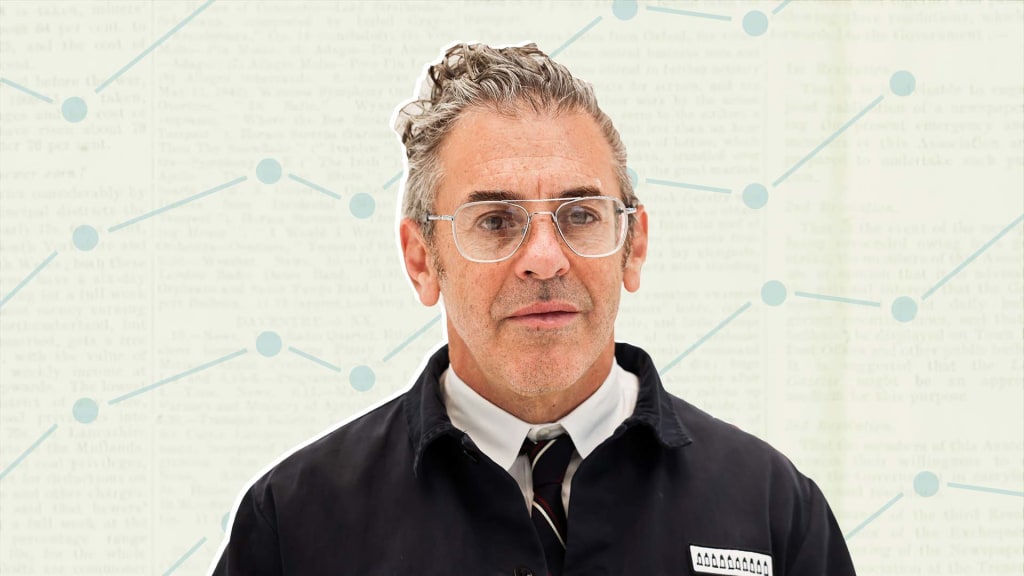
Imagine you’re Jerry Seinfeld. You reportedly got paid a total of around $60 million when the original Seinfeld episodes aired. But, because you own a percentage of the back end rights, you’ve still gotten paid to the tune of over $400 million (and that was before the Netflix deal) for syndication.
That’s the beauty of ownership.
Now imagine you’re contemporary artist like Tom Sachs. Your sculptures are displayed in places like the Museum of Modern Art, the Guggenheim, and the Whitney. Some of your works have sold at auction for hundreds of thousands of dollars.
But here’s the thing: Once you’ve sold a sculpture, you can’t benefit from a secondary sale. If you sell an original work for, say, $10,000, and the owner later sells it for $100,000, he or she reaps the financial reward from the increase in value.
You? You no longer own a percentage of your work. You don’t own “syndication” rights. “Seinfeld money”? You don’t see any of that.
That’s not necessarily a problem for Sachs. First and foremost, he’s an artist because he loves creating art. And his business is thriving.
But what about all the people who have a similar passion for creating art, but struggle to make a living doing what they love? That’s a problem Sachs set out to help solve with the Rocket Factory NFT Project, “a trans-dimensional manufacturing plant” that allows you to build and own a personalized rocket in the physical and virtual worlds. Choose your three components (body, tail, and nose cone) and Sachs builds a unique physical rocket that also gets minted as an NFT. Once built, the rocket gets launched.
Then you decide what happens next. You could have the rocket placed in a glass container and shipped to you. You could donate it to a museum. Or, like some, you could even choose to have it shredded.
All 3,000 components were claimed during the release last August. Pharrell assembled a rocket. Budweiser assembled a rocket. Tiffany just acquired an Okapi NFT from Rocket Factory for a reported $380,000.
Great for Sachs. But what about struggling artists?
That’s where Sachs hopes Rocket Factory’s success will create a ripple effect that benefits the broader artist community.
As Tom Galloway writes, no asset class depends more on scarcity and authenticity than art. There is only one Mona Lisa, and we know it was created by Leonardo da Vinci. Scarcity and authenticity are assured.
The same is true for NFTs that are authenticated publicly on the blockchain and are therefore inherently scarce.
Combine scarcity and authenticity with the opportunity to continue to participate financially in future sales of the art you create, and a struggling artist may not have to struggle quite so much.
When a Rocket Factory NFT is sold on Opensea, the marketplace gets 2.5 percent for handling the transaction and Sachs receives 10 percent, paid by the buyer. Other artists might choose to embed higher percentages in their blockchain contracts.
The key is that the business aspect of the art is seamlessly integrated into the art itself. Ten percent, 20 percent, 90 percent–it’s native to the system and part of the transaction.
All of which makes Sachs optimistic about the future. And for art not just as a business, but as a community.
“The NFT thing is huge,” Sachs says, “but it’s happening so quickly because our methods of communication are so fast. And because there are no gatekeepers. The biggest artists in the space are self-made. Eric Hu. Art Blocks. Snowfro. These are some of the biggest artists in the world, because blockchain and NFT have opened art to a much larger audience.”
And as for the growing pains inherent to the space?
“People get frustrated because it can be difficult and hard and glitchy,” Sachs says. “Yet all those problems are caused, and will be answered, by the same thing: It’s new, and it’s up to the community to make the community more efficient. Remember, we’re still in year one. It may take longer than we like to get there, but it’s thrilling that artists are at the vanguard of the technology.”
For Sachs, helping to create greater economic opportunities for artists matters most. As Andy Warhol said, “Making money is art, and working is art, and good business is the best art.”
For struggling artists, receiving royalties for sales in the secondary market is good business.
Which will help them continue to work, and continue to make great art.
And make a living doing what they love.

No comments:
Post a Comment
Please follow us:
https://twitter.com/NFTWebUpdates
https://www.tumblr.com/blog/view/nftwebupdates